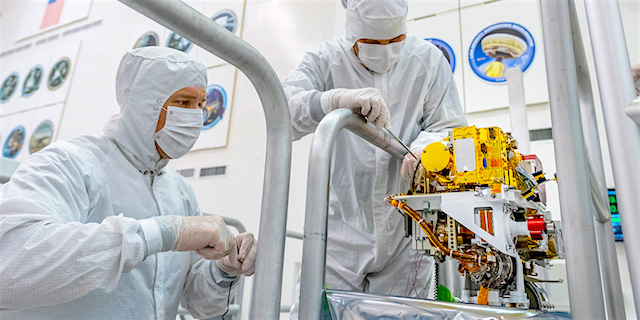 Engineers at NASA’s Jet Propulsion Laboratory in Pasadena, California, have installed the SuperCam Mast Unit onto the Mars 2020 rover. The instrument’s camera, laser and spectrometers can identify the chemical and mineral makeup of targets as small as a pencil point from a distance of more than 20 feet (6 meters).
Engineers at NASA’s Jet Propulsion Laboratory in Pasadena, California, have installed the SuperCam Mast Unit onto the Mars 2020 rover. The instrument’s camera, laser and spectrometers can identify the chemical and mineral makeup of targets as small as a pencil point from a distance of more than 20 feet (6 meters).
SuperCam is a next-generation version of the ChemCam instrument operating on NASA’s Curiosity Mars rover. It has been developed jointly in the U.S., France and Spain. Once France delivered the last piece of flight hardware, the instrument was fully integrated on the Mars 2020 rover on June 25, 2019, in the Spacecraft Assembly Facility’s High Bay 1 clean room at JPL.
“SuperCam has come a long way from being a bold and ambitious idea to an actual instrument,” said Sylvestre Maurice, the SuperCam deputy principal investigator at the Institut de Recherche en Astrophysique et Planétologie in Toulouse, France. “While it still has a long way to go – all the way to Mars – this is a great day for not only SuperCam but the amazing consortium that put it together.”
Mars 2020 scientists will use SuperCam to examine Martian rocks and soil, seeking organic compounds that could be related to past life on Mars. [More at link]








